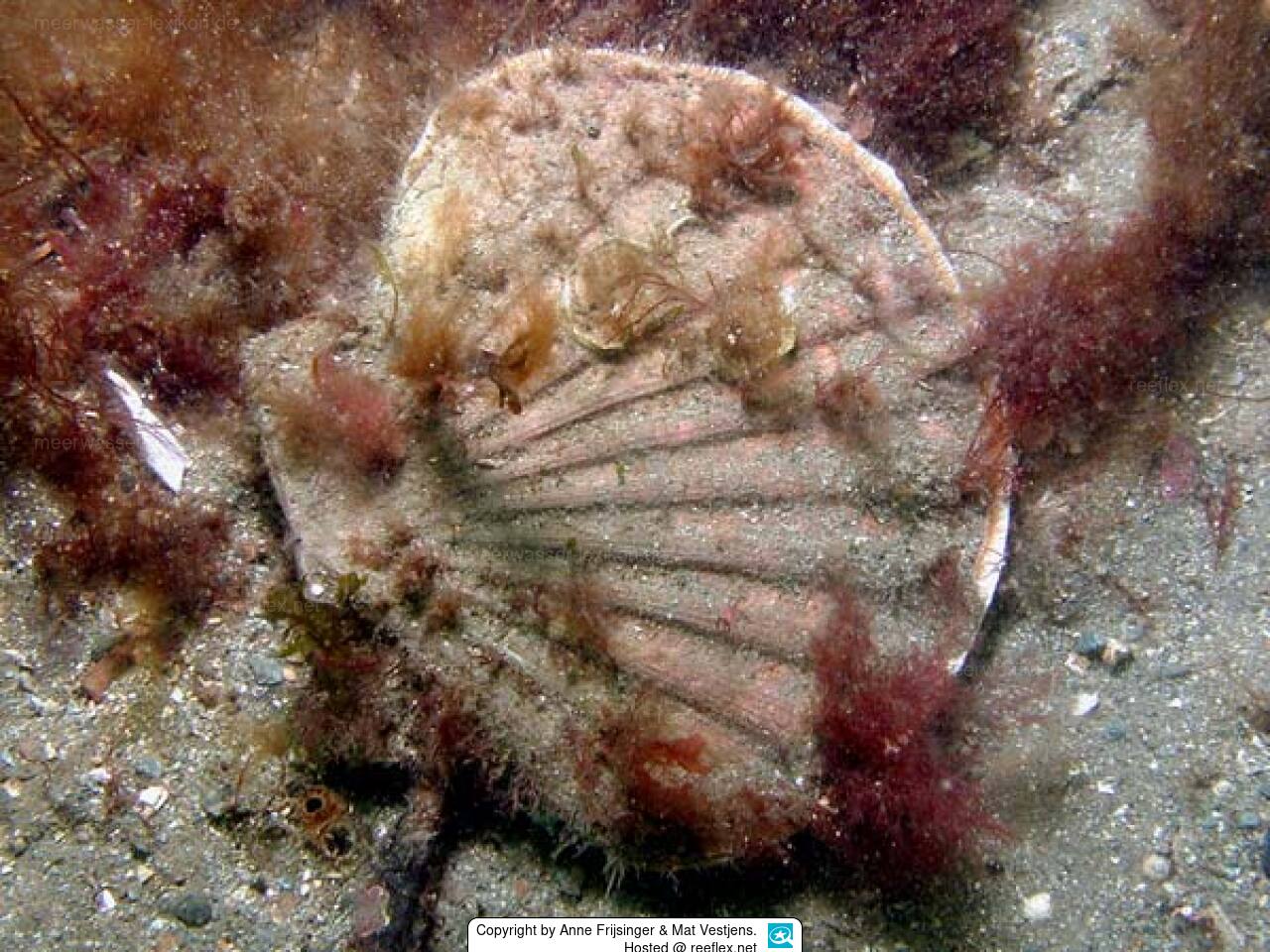Info
Pecten maximus (Linnaeus, 1758)
Pecten maximus prefers areas with clean firm sand, fine and sandy gravel and can occasionally be found on muddy sand.
Mussels are on the menu for many sea creatures and Mother Nature has provided the mussel with a fantastic escape method.
When a predator approaches, the large mussel receives a kind of push-back drive through a sudden and powerful closing and can swim a few meters quickly.
In this way, the mussel catapults itself directly out of the danger area and confuses its attackers.
This escape method is also responsible for the “expert animal” recommendation, as the mussel can quickly disappear behind reef stones out of reach and perish there.
"The two shell halves (flaps) are shaped differently. The left flap (on the top in the living animal) is very flat and even slightly curved inwards, while the right flap, when fully grown, is curved outwards by about 2.5 cm. The outside of the shells of both species are rough , as they are covered with concentric and very fine rows of scales. The radial ribs (around 12 to 14) are rounded in cross-section. The mussel has a mottled, reddish-brownish, flat shell half and a white, bulbous shell half, the latter often partially yellowish to brownish-reddish color patterns. On the edge of the mantle, scallops have tentacles, between which there are a total of 60 blue, millimeter-sized lens eyes."
Wikipedia.
The mussel is often host to the parasitic copepod Modiolicola maximus (Thompson I.C., 1893).
Synonymised names
Ostrea maxima Linnaeus, 1758 · unaccepted (original combination)
Pecten medius Lamarck, 1819, sensu Daniel, 1884 · unaccepted (misapplication)
Pecten vulgaris da Costa, 1778 · unaccepted (synonym)
Plicatula similis (G. B. Sowerby II, 1842) · unaccepted
Vola maxima (Linnaeus, 1758) · unaccepted > superseded combination
Direct children (1)
Subspecies Pecten maximus sulcicostatus G. B. Sowerby II, 1842 accepted as Pecten sulcicostatus G. B. Sowerby II, 1842
Pecten maximus prefers areas with clean firm sand, fine and sandy gravel and can occasionally be found on muddy sand.
Mussels are on the menu for many sea creatures and Mother Nature has provided the mussel with a fantastic escape method.
When a predator approaches, the large mussel receives a kind of push-back drive through a sudden and powerful closing and can swim a few meters quickly.
In this way, the mussel catapults itself directly out of the danger area and confuses its attackers.
This escape method is also responsible for the “expert animal” recommendation, as the mussel can quickly disappear behind reef stones out of reach and perish there.
"The two shell halves (flaps) are shaped differently. The left flap (on the top in the living animal) is very flat and even slightly curved inwards, while the right flap, when fully grown, is curved outwards by about 2.5 cm. The outside of the shells of both species are rough , as they are covered with concentric and very fine rows of scales. The radial ribs (around 12 to 14) are rounded in cross-section. The mussel has a mottled, reddish-brownish, flat shell half and a white, bulbous shell half, the latter often partially yellowish to brownish-reddish color patterns. On the edge of the mantle, scallops have tentacles, between which there are a total of 60 blue, millimeter-sized lens eyes."
Wikipedia.
The mussel is often host to the parasitic copepod Modiolicola maximus (Thompson I.C., 1893).
Synonymised names
Ostrea maxima Linnaeus, 1758 · unaccepted (original combination)
Pecten medius Lamarck, 1819, sensu Daniel, 1884 · unaccepted (misapplication)
Pecten vulgaris da Costa, 1778 · unaccepted (synonym)
Plicatula similis (G. B. Sowerby II, 1842) · unaccepted
Vola maxima (Linnaeus, 1758) · unaccepted > superseded combination
Direct children (1)
Subspecies Pecten maximus sulcicostatus G. B. Sowerby II, 1842 accepted as Pecten sulcicostatus G. B. Sowerby II, 1842







 Anne Frijsinger & Mat Vestjens, Holland
Anne Frijsinger & Mat Vestjens, Holland






